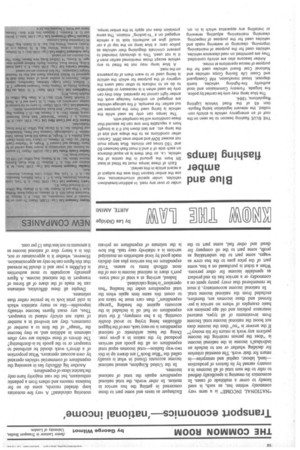C100%.1
Page 60

If you've noticed an error in this article please click here to report it so we can fix it.
,M6 AIRTE, AMIMI by Les Oldridge NEW COMPANIES
Blue and amber flashing lamps
THE BLUE flashing beacon to be seen on the roof of an emergency vehicle is strictly controlled, the relevant legislation being Regulation 45 of the Road Vehicle Lighting Regulations, 1964.
The blue lamp may only be carried by police, fire brigade, Forestry Commission and local authority fire-fighting vehicles, bomb disposal, blood transfusion, HM Coastguard and Coast Life Saving Corps vehicles and National Coal Board vehicles used for the purpose of rescue operations at mines.
Amber beacons also are strictly controlled. They are permitted on road clearance vehicles, vehicles used for the purpose of maintaining, improving, cleansing or watering roads and vehicles used for the purpose of inspecting, cleansing, maintaining, adjusting, renewing or installing any apparatus which is •in, on.
under or over any road. In addition breakdown vehicles, under special circumstances, may use the amber beacon (this was the subject of a recent article in this series).
Each of these lamps must be fitted at least 5ft from the ground in the centre of the vehicle, i.e. so that there is an equal distance on each side of it and it must flash between 60 and 150 times per minute. Blue lamps must not exceed 50W and amber ones 36W. Certain other conditions as to the shape and size of the lamp etc. are laid down but if it is bought from a reputable firm one can be assured that these conditions will be complied with.
The lamps can only be used while the vehicle is being used from the purposes set out earlier: for example, if fire salvage vehicles are engaged on ordinary haulage work the amber light cannot be operated. Also they can only be used when it is necessary or desirable to do so to indicate to other road users the urgency of the purpose for which the vehicle is being used or to warn them of its presence on the road.
A blue lamp may not be fitted to any vehicle except those mentioned earlier even if it is not used. This is obviously intended to prevent criminals disguising their vehicles as police cars: a blue lamp on the top of a car would give an authentic look to a vehicle engaged on a "hi-jacking" mission. The same provision does not apply to the amber lamps.












































































































